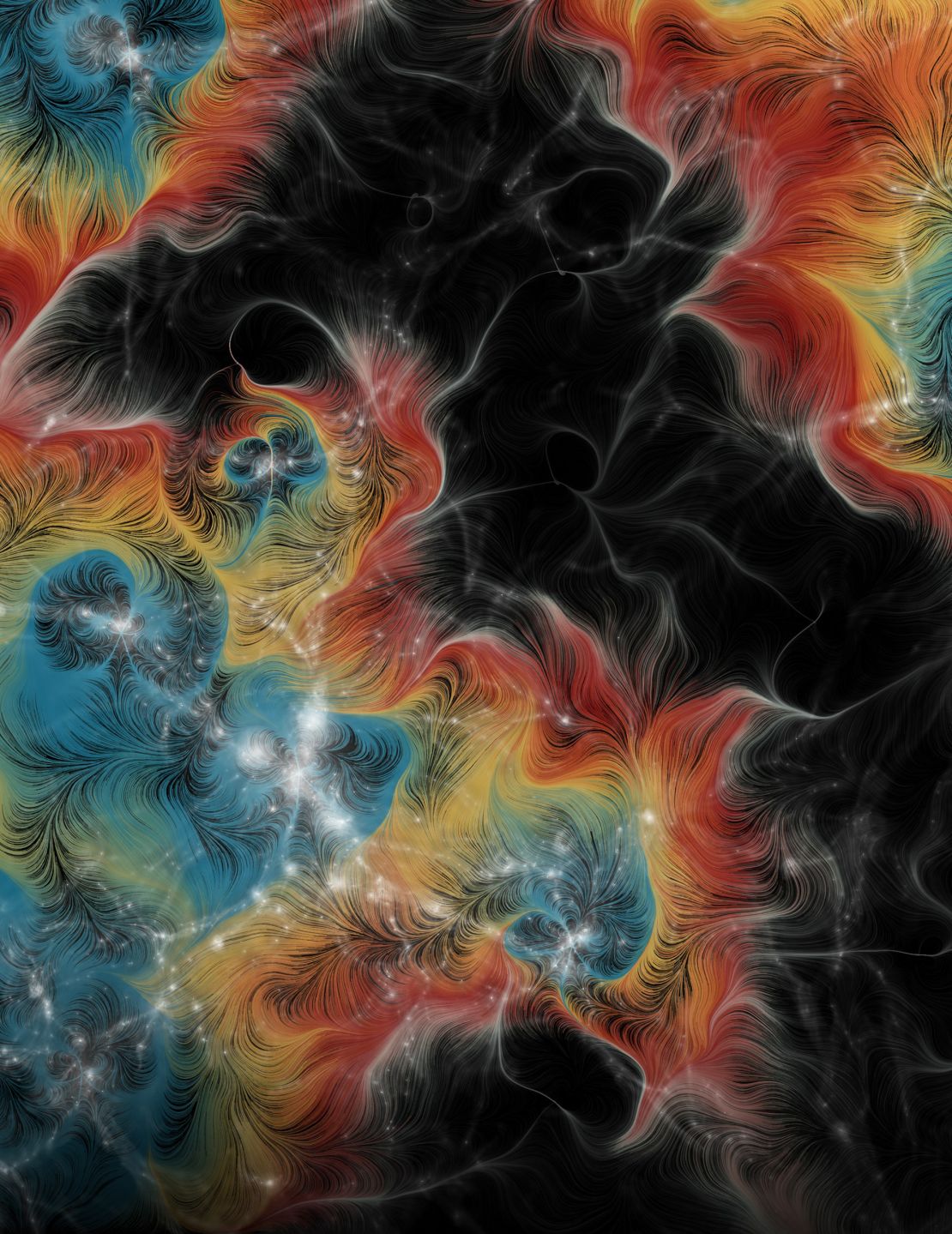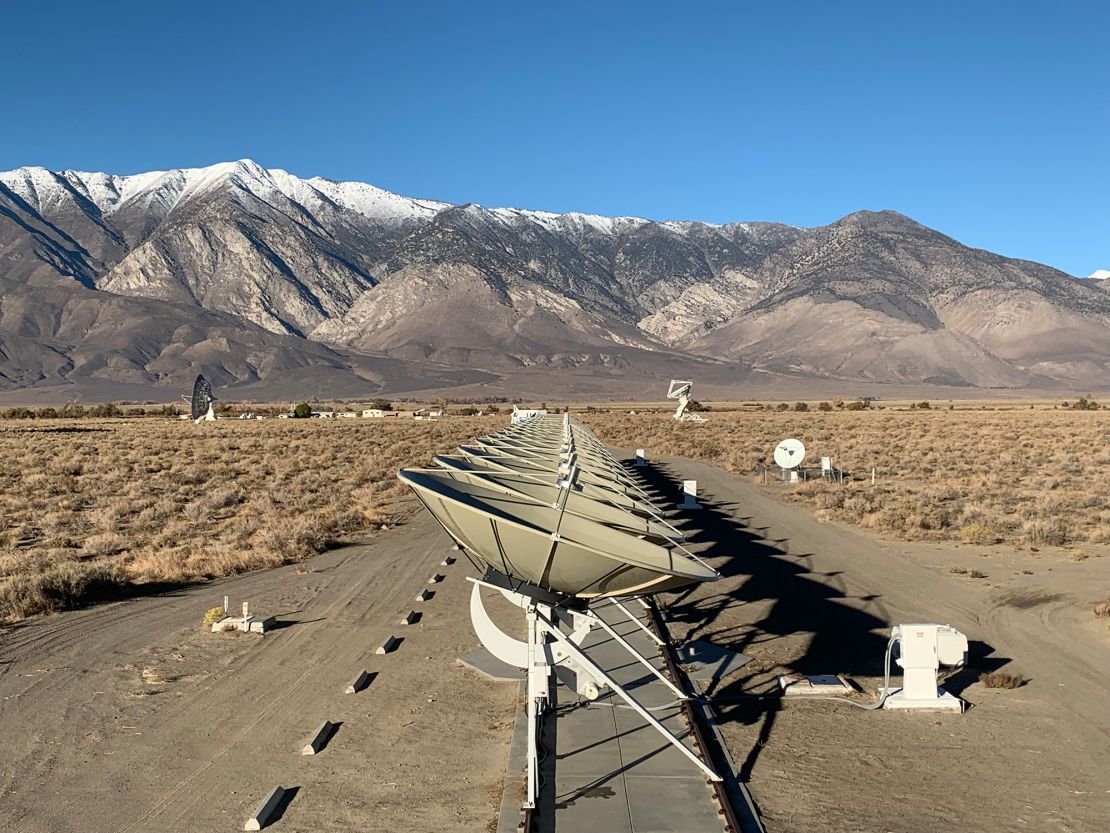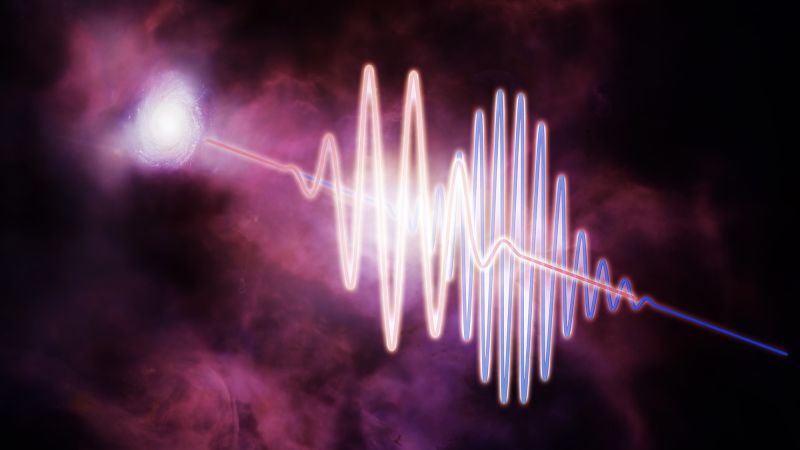Sign up for CNN’s Wonder Theory science newsletter. Explore the universe with news on fascinating discoveries, scientific advancements and more.
CNN
—
Astronomers have used mysterious fast radio bursts, or millisecond-long bright flashes of radio waves from space, to help them track down some of the missing matter in the universe.
Dark matter and dark energy make up most of the universe. Dark matter is an enigmatic substance that shapes the cosmos, while dark energy is a force that accelerates the expansion rate of the universe, according to NASA. Both are impossible to directly observe but can be detected due to their gravitational effects.
But the rest of the universe is made of cosmic baryons, or ordinary matter, which can be found in tiny particles called protons and neutrons.
“If you add up all the stars and planets and cold gas that you see with your telescopes, it only amounts to less than 10% of ordinary matter in the universe,” said Liam Connor, assistant professor of astronomy at Harvard University.
While astronomers thought most of the universe’s ordinary matter was floating in the spaces between galaxies, called the intergalactic medium, or within the extended halos of galaxies — vast, spherical regions including stars and hot gas — they couldn’t measure this foglike matter. That’s because ordinary matter emits light at different wavelengths, but much of it is so diffuse that it’s like trying to spot fog, astronomers say.
The inability to detect roughly half of the cosmos’ ordinary matter led to a decades-long cosmology struggle called the missing baryon problem.
Now, Connor and his colleagues have directly observed the missing matter by using the flashing of fast radio bursts to essentially map out what couldn’t be seen before. They reported their findings in a new study published Monday in the journal Nature Astronomy.
“The FRBs shine through the fog of the intergalactic medium, and by precisely measuring how the light slows down, we can weigh that fog, even when it’s too faint to see,” Connor, the paper’s lead author, said. Much of the work for the study took place while Connor was a research assistant at the California Institute of Technology.
Down the road, astronomers believe they can use fast radio bursts to help illuminate the otherwise invisible structure of the universe.

More than a thousand fast radio bursts, or FRBs, have been detected since their discovery in 2007. Only about 100 have been traced back to galaxies, according to the study authors. Astronomers are still unsure of the exact causes behind the bursts, but finding more of them could reveal their murky origins.
To illuminate the missing matter, the new analysis relied on a mixture of previously observed fast radio bursts, as well as bright flashes that had never been observed until the research was underway.
The 69 fast radio bursts examined in the study exist at distances ranging from 11.74 million to nearly 9.1 billion light-years from Earth. The farthest, named FRB 20230521B, was discovered during the research and is the current record holder for the most distant fast radio burst ever observed.
The study team used the Deep Synoptic Array, a network of 110 radio telescopes, to find and identify 39 of the fast radio bursts in the study. The telescope array, designed to trace fast radio bursts back to their origin points, is located near Bishop, California, at Caltech’s Owens Valley Radio Observatory. The W. M. Keck Observatory in Hawaii and Palomar Observatory near San Diego helped measure the distances between the fast radio bursts and Earth. And the other 30 fast radio bursts were found by the Australian Square Kilometre Array Pathfinder and other telescopes around the world.

When radio waves travel as fast radio bursts toward Earth, their light can be measured in different wavelengths that spread out. How much the light spreads out is dependent on how much matter is in its path.
The team was able to measure how much each fast radio burst signal slowed down as it passed through space before reaching Earth, illuminating the gas it encountered along the way.
The speed of fast radio bursts can be affected by what they travel through, meaning different wavelengths of light arrive at different times. While long, red wavelengths travel more slowly to reach Earth, shorter, bluer wavelengths arrive more quickly. Each wavelength allowed astronomers to measure the invisible matter.
The short pulses of fast radio bursts are crucial for this measurement because they act like flashing cosmic beacons, Connor said.
“We can measure very precisely how much the radio pulse is slowed down at different wavelengths (it’s called plasma dispersion), and this effectively counts up all the baryons,” Connor said. “For a star that shines continuously or a source that is not in the radio, we can not measure this ‘dispersion’ effect. It must be impulsive, short, and at radio wavelengths.”
The team was able to use the dispersion of light to map and measure matter along the pathway of the fast radio bursts.
“It’s like we’re seeing the shadow of all the baryons, with FRBs as the backlight,” said study coauthor Vikram Ravi, an assistant professor of astronomy at Caltech, in a statement. “If you see a person in front of you, you can find out a lot about them. But if you just see their shadow, you still know that they’re there and roughly how big they are.”
After mapping out all the fast radio bursts and the matter they passed through and illuminated, the team determined that 76% of cosmic matter exists as hot, low-density gas in the space between galaxies. Another 15% can be found in galactic halos, while the remainder is located within galaxies themselves as stars, planets or cold gas.
The observation-based findings align with prior predictions made using simulations, according to the study authors. William H. Kinney, professor of physics at the University at Buffalo’s College of Arts and Sciences, agreed.
“So the upshot is that they came up with a new way of finding the baryons we knew had to be there, but whether they were really in the (intergalactic medium) instead of in halos was still something of an open question,” said Kinney, who was not involved in the research.
“The decades-old ‘missing baryon problem’ was never about whether the matter existed,” Connor said. “It was always: Where is it? Now, thanks to FRBs, we know: Three-quarters of it is floating between galaxies in the cosmic web.”
Understanding the distribution of ordinary matter can help researchers understand how galaxies grow and evolve.
“Baryons are pulled into galaxies by gravity, but supermassive black holes and exploding stars can blow them back out — like a cosmic thermostat cooling things down if the temperature gets too high,” Connor said. “Our results show this feedback must be efficient, blasting gas out of galaxies and into the (intergalactic medium).”
Fast radio bursts also may be able to help map the cosmic web in detail, Ravi said. This structure, largely made of dark matter, serves as the backbone of the universe, according to NASA.
Caltech is currently planning to build another radio telescope in the Nevada desert, which could build upon the findings from the new study by finding and tracing up to 10,000 fast radio bursts per year, Connor said.
“It’s a triumph of modern astronomy,” Ravi said.“We’re beginning to see the Universe’s structure and composition in a whole new light, thanks to FRBs. These brief flashes allow us to trace the otherwise invisible matter that fills the vast spaces between galaxies.”

